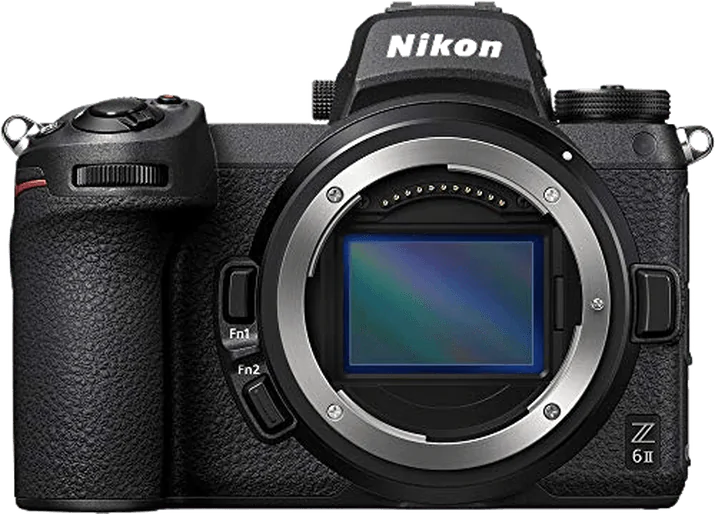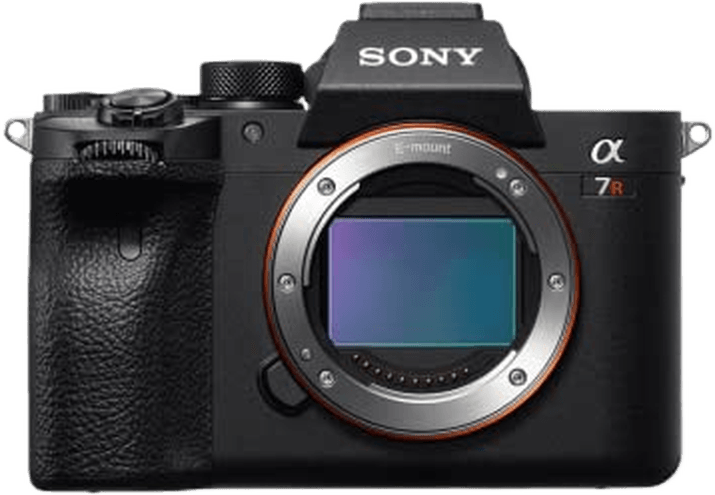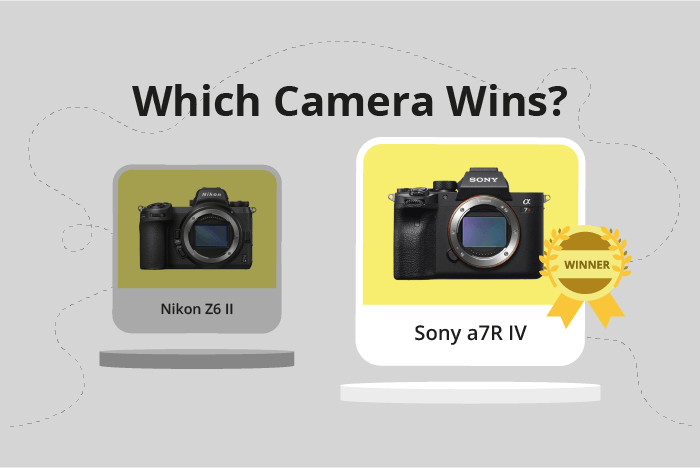Nikon Z6 II vs Sony a7R IV Comparison
Nikon Z6 II

Sony a7R IV

The Sony a7R IV edges out the Nikon Z6 II with a score of 84/100 compared to 83/100. Both mirrorless cameras share common specifications, such as their release years (2019 for Sony and 2020 for Nikon) and similar sizes (Sony: 129 x 96 x 78mm, Nikon: 134 x 101 x 70mm).
The Sony a7R IV holds an advantage with its lighter weight of 665g (1.47lbs) compared to the Nikon Z6 II’s 705g (1.55lbs). However, the Nikon Z6 II is more affordable with a launch price of $1995, while the Sony a7R IV is priced at $3500.
Both cameras have their strengths, with the Sony a7R IV offering a slightly higher score and lighter weight, and the Nikon Z6 II being more budget-friendly. Your choice will depend on your priorities and preferences in a mirrorless camera.
Nikon Z6 II vs Sony a7R IV Overview and Optics
The Sony a7R IV emerges as the winner in the optics comparison with a score of 85/100, a 2-point lead over the Nikon Z6 II’s score of 83/100. Both cameras share several specifications, including a CMOS sensor, full-frame sensor size, and built-in image stabilization. Additionally, they both have their respective lens mounts – the Nikon Z for the Z6 II and the Sony FE for the a7R IV.
The Sony a7R IV outperforms the Nikon Z6 II in terms of megapixels and DXOMARK sensor score. With 61.2 megapixels, the a7R IV captures more detail and offers higher resolution than the Z6 II, which has 24.5 megapixels. Moreover, the a7R IV has a DXOMARK sensor score of 99, indicating superior image quality compared to the Z6 II’s score of 94.
However, the Nikon Z6 II has an advantage in shooting speed. It can capture 14 frames per second, making it more suitable for fast-action photography compared to the a7R IV’s 10 frames per second. This difference could be crucial for photographers who prioritize capturing fast-moving subjects.
To conclude, the Sony a7R IV is the better camera in terms of optics, owing to its higher resolution and superior sensor quality. The Nikon Z6 II, on the other hand, excels in shooting speed, making it more appropriate for action photography. Ultimately, the choice between these two cameras depends on the photographer’s specific needs and priorities.
Nikon Z6 II vs Sony a7R IV Video Performance
The Nikon Z6 II outperforms the Sony a7R IV in video capabilities with a score of 91/100 as opposed to the Sony’s 70/100. Both cameras feature a maximum video resolution of 4K and dimensions of 3840 x 2160, as well as built-in time-lapse functionality. Despite these similarities, there are key differences that make the Nikon Z6 II the superior choice for videography.
The most significant advantage of the Nikon Z6 II is its higher maximum video frame rate of 120fps, while the Sony a7R IV only supports up to 30fps. This allows the Nikon Z6 II to capture smoother and more detailed slow-motion footage, making it a better option for those who prioritize dynamic video content.
On the other hand, the Sony a7R IV still has its merits, although they may not be as pronounced in the video department. Its strengths lie in other aspects, such as its higher resolution sensor for still photography. However, this comparison focuses on video capabilities, and in this regard, the Nikon Z6 II clearly takes the lead.
In comparing the video capabilities of the Nikon Z6 II and the Sony a7R IV, the Nikon Z6 II emerges as the superior option due to its higher video frame rate. The Sony a7R IV trails behind, as it does not offer any distinct advantages in video performance. For those seeking a camera with excellent video capabilities, the Nikon Z6 II is the clear choice.
Nikon Z6 II vs Sony a7R IV Features and Benefits
The Nikon Z6 II triumphs over the Sony a7R IV with a feature score of 87/100, compared to the Sony’s 83/100. Both cameras share several specifications, including touchscreen capability, the absence of GPS, and the presence of WIFI and Bluetooth connectivity. However, there are notable differences that contribute to the Nikon Z6 II’s higher score.
The Nikon Z6 II boasts a larger screen size of 3.2 inches, compared to the Sony a7R IV’s 3 inches. Additionally, the screen resolution on the Nikon is significantly higher at 2,100,000 dots, while the Sony has a resolution of 1,440,000 dots. These factors contribute to a more enjoyable and precise viewing experience on the Nikon Z6 II.
On the other hand, the Sony a7R IV has a flip screen, which the Nikon Z6 II lacks. This feature can be advantageous for photographers who need flexibility in composing their shots from various angles. Despite having a lower overall feature score, the Sony a7R IV still excels in this particular aspect.
To conclude, the Nikon Z6 II outperforms the Sony a7R IV in terms of feature score, screen size, and screen resolution, making it the superior camera in these aspects. However, the Sony a7R IV offers the advantage of a flip screen, which may be an important consideration for some photographers. Ultimately, the choice between these two cameras will depend on individual preferences and priorities.
Nikon Z6 II vs Sony a7R IV Storage and Battery
The Sony a7R IV outperforms the Nikon Z6 II in storage and battery with a score of 79/100 compared to the Nikon’s score of 71/100. Both cameras share common specifications, including two memory card slots and USB charging capabilities. However, the Sony a7R IV has a longer battery life of 670 shots, while the Nikon Z6 II offers 410 shots. This difference in battery life gives the Sony a7R IV a clear advantage in this category.
The Nikon Z6 II accepts both SD and CFexpress Type B / XQD memory cards (UHS-II compatible), providing more versatility in storage options than the Sony a7R IV, which only accepts SD / SDHC / SDXC memory cards (UHS-II compatible). Despite this advantage, the Nikon Z6 II’s lower battery life ultimately results in a lower score for storage and battery.
The Sony a7R IV’s superior battery life and overall higher score make it the better option for users who prioritize longer shooting times without the need for frequent battery replacements or recharging. The Nikon Z6 II, on the other hand, offers greater flexibility in memory card options, which may be beneficial for some users.
Nikon Z6 II vs Sony a7R IV – Our Verdict
Are you still undecided about which camera is right for you? Have a look at these popular comparisons that feature the Nikon Z6 II or the Sony a7R IV:

